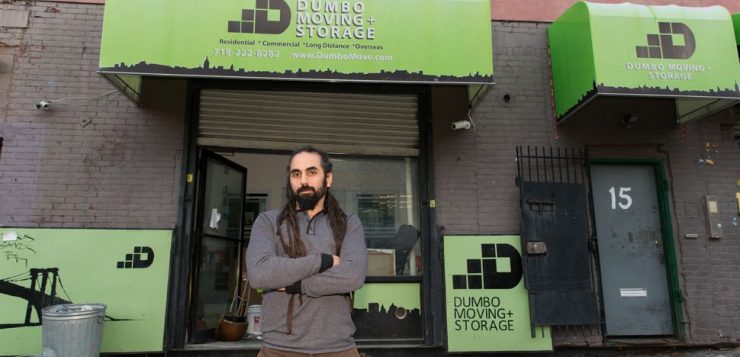Cryptocurrencies so far haven’t lived up to their promise as digital cash for buying goods and services. Whether that happens someday is anyone’s guess.
Ever the tech enthusiast, Bert Green decided to start accepting bitcoin at his Chicago storefront in 2013, becoming one of the first art galleries in the US to accept the digital currency as payment.
Things didn’t work out as planned.
“It’s hardly ever happened,” he said, recalling just two sales using the cryptocurrency over the past four years at his gallery, Bert Green Fine Art. “People do not transact in bitcoin.”
Green’s experience isn’t unique. Despite bitcoin and other digital currencies being billed as — you know — currencies, they’ve instead turned into investment vehicles or stores of wealth. That shift appears to have sped up last year, when bitcoin’s price skyrocketed from $1,000 last February to nearly $20,000 by December — causing cryptocurrency to become a topic at the family dinner table.
This lack of spending with cryptocurrencies could limit their future potential. Bitcoin, ethereum and other digital currencies may remain in the realm of investors and crypto enthusiasts, instead of becoming long-sought universal monies that people use every day and can be spent at any store or website around the world.
Even after bitcoin’s price tumbled this year, chances that it could reach that promise are anyone’s guess.
“That is the $64,000 question, that is, what’s the next narrative for bitcoin?” said Nick Colas, co-founder of the independent research firm DataTrek Research, who’s been following cryptocurrencies since 2012. “It’s really hard to pin down and that’s why the price is so volatile.”
The headaches of bitcoin lunch
Things weren’t always this way. Back in 2013, bitcoin was being trumpeted as the next, new currency, unfettered by governments, easily movable across borders and anonymous for users.
Looking to take part in this new concept, Kashmir Hill, now a senior reporter in San Francisco for Gizmodo Media Group, spent a week that year living solely on bitcoin, writing about her experience for Forbes. It was a giant pain just finding retailers that would accept the currency.
She did the same experiment a year later and found more retailers accepted the digital tokens, but she bumped up against plenty of other problems. One day, she tried to buy lunch at a local market that accepted bitcoin. Her payment didn’t go through so she left starving, she said. The transaction completed about two hours later and she had to go back the next day to get her meal.
“In my experience, bitcoin was so annoying that it was hard to imagine it becoming easier than going to the local ATM and getting money,” she said.
In another situation, Hill said she bought a bunch of strangers dinner at a sushi restaurant in 2013 for 10 bitcoin, the equivalent at the time of $1,200. The price of those bitcoin today would be roughly $93,000.
“I just don’t know how I could again spend this currency that could be worth so much more,” she added. “I think I would be going crazy while doing it.”
Hill’s experiment revealed a bunch of annoyances with spending with bitcoin. It’s only accepted in a small fraction of retailers, and using it to buy stuff isn’t all that simple, often requiring sending funds from one digital wallet to another using an online address called a public key. Plus, cryptocurrency fans don’t want to part with their digital tokens for fear they’ll miss out on the next big run-up in prices.
One of the best-known examples of missed opportunities with bitcoin came from one of the earliest transactions using the currency. In 2010, when bitcoin was worth a fraction of a penny, Florida software programmer Laszlo Hanyecz agreed to pay someone 10,000 bitcoin for two Papa John’s pizzas.
“Those are the two most expensive pizzas in the history of the planet,” Colas said. (This week, they’d be worth approximately $93 million — or $46.5 million per pie.)
With so few people agreeing to part ways with their bitcoin, some retailers have stopped accepting it. The gaming company Valve in December said it would stop taking the currency on its Steam service, citing its high fees and volatility. OKCupid, too, dropped bitcoin, saying a tiny percentage of people used it on the dating site.
The e-retailer Overstock.com started accepting bitcoin in 2013 and now takes dozens of cryptocurrencies as payment, including Dash, Monero and litecoin. Despite that, the company said roughly 0.25 percent of its revenue comes from purchases using cryptocurrencies.
Julian Plyter, co-founder and CEO of the Manhattan ice-cream sandwich shop Melt, said his business has made just 75 transactions with bitcoin between 2014 and 2017. But, he added, many of those transactions were with journalists curious how bitcoin buying works.
Better on the dark web
Slow bitcoin sales aren’t a drag for everyone, though. Lior Rachmany, CEO of Dumbo Moving in Brooklyn, started accepting bitcoin, ethereum and litecoin a few months ago.
While these crypto-sales make up just 5 percent of his business, he likes using digital money because transactions are irreversible, ensuring he’ll get paid for a move without fear a customer will charge back the transaction. Plus, past moves have the potential of accruing in value as bitcoin prices rise and some international customers found it easier to use, he said.
He’s now planning on selling some of his company’s crypto reserves for cash to stock up on equipment ahead of the summer moving season.
“I think that’s the way of the future, less politics behind the money,” Rachmany said. “And I think everybody should get on it.”
These benefits for retailers, of course, can also be seen as disincentives for consumers.
“It’s a final transaction. It’s like handing someone cash on the sidewalk,” Green said.
Read more at:
https://www.cnet.com/news/bitcoin-cryptocurrency-big-in-investing-but-still-lousy-for-buying-a-sandwich/







